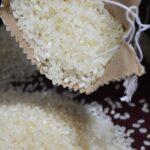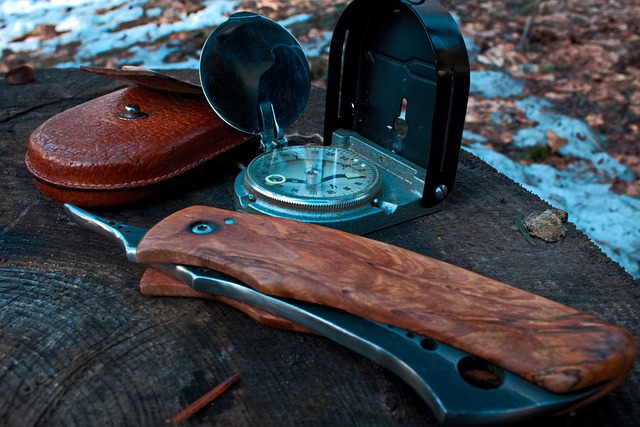Introduction
In times of uncertainty or emergency situations, having the right tools can make all the difference between survival and struggle. While there are countless survival gadgets and gear available on the market, sometimes the most effective tools are the ones you create yourself. In this quick guide, we’ll explore several DIY survival tools that you can easily make at home using everyday materials. From fire starters to shelter-building equipment, these homemade tools will empower you to navigate and thrive in challenging environments.
DIY Fire Starter
Fire is one of the most critical tools for survival. Fire provides warmth, light, and a means to cook food. To create a DIY fire starter, gather some cotton balls, petroleum jelly, and an empty egg carton. Start by coating the cotton balls with petroleum jelly, place them in the egg carton compartments, and store them in a waterproof container. These homemade fire starters are lightweight, compact, and highly effective for igniting tinder and kindling in any weather condition. Other firestarter options include firestarter necklaces from graftoutdoors.com.
Paracord Survival Bracelet
Paracord is a versatile and durable material that can be used for a wide range of survival tools, including bracelets. To make a paracord survival bracelet, you’ll need a length of paracord and a buckle. Follow online tutorials or guides to weave the paracord into a bracelet pattern, ensuring it’s long enough to provide sufficient cordage in an emergency. This wearable tool doubles as a handy length of rope for building shelters, securing gear, or fashioning makeshift repairs in the field.
DIY Water Filtration System
Access to clean drinking water is essential for survival, especially in wilderness environments where water sources may be contaminated. To create a DIY water filtration system, gather materials such as a plastic bottle, activated charcoal, sand, and gravel. Cut the bottom of the bottle and layer the charcoal, sand, and gravel inside, creating a filtration bed. Pour water through the top of the bottle, and collect the filtered water from the opening at the bottom. This simple yet effective system can remove impurities and pathogens, making water safer to drink in emergencies. If possible, still boil your water. This method will take out much of the debris, but pathogens can still enter your filtered water.
Altoids Tin Survival Kit
Altoid tins are the perfect size for creating compact survival kits that fit easily in a pocket or backpack. To make an Altoids tin survival kit, gather small essentials such as a mini flashlight, matches, a whistle, a fishing line, hooks, and a small knife. Arrange the items neatly inside the tin, using foam or cotton balls to prevent rattling. Customize your survival kit based on your specific needs and preferences, ensuring it contains essential tools for fire starting, signaling, navigation, and fishing.
Homemade Compass
Navigation is a fundamental skill for survival, enabling you to find your way in unfamiliar terrain or during adverse weather conditions. To make a homemade compass, you’ll need a magnetized needle, a small piece of cork or foam, and a bowl of water. Rub the needle against a magnet to magnetize it, then carefully float the needle on the surface of the water using the cork or foam. The needle will align itself with the Earth’s magnetic field, indicating north and south directions for navigation.
DIY Pocket Stove
A portable stove is invaluable for cooking food, boiling water, and providing warmth in survival situations. To make a DIY pocket stove, gather materials such as a small tin can, cardboard, and alcohol fuel. Cut ventilation holes in the sides of the tin can and line the bottom with cardboard. Fill the can with alcohol fuel, such as denatured alcohol or rubbing alcohol, and ignite it to create a controlled flame. This compact stove is lightweight, efficient, and perfect for heating small meals or boiling water on the go. Purchasing a JetBoil or similar stove and keeping it with your bug-out bag would be an affective alternative.
Tin Can Lantern
Lighting is essential for safety and visibility during nighttime or low-light conditions in the wilderness. To make a DIY tin can lantern, you’ll need an empty tin can, a hammer and nail, and a tea light candle. Use the hammer and nail to punch holes in the sides of the tin can, creating a decorative pattern or design. Place the tea light candle inside the can and light it to illuminate your surroundings with a warm and ambient glow. This homemade lantern provides portable and inexpensive lighting for camping, hiking, or emergencies.
DIY First Aid Kit
A well-stocked first aid kit is essential for treating injuries and medical emergencies in the field. To create a DIY first aid kit, gather basic supplies such as bandages, adhesive tape, antiseptic wipes, gauze pads, and pain relievers. Customize your first aid kit based on your specific needs and medical conditions, ensuring it contains essential items for wound care, minor injuries, and basic medical care. Store the first aid kit in a waterproof container or ziplock bag for easy access and protection from the elements. Here’s a good pre-made first aid kit.
PVC Bow and Arrow
In a survival scenario, hunting for food can be a critical skill for sustaining yourself and your group. To make a DIY PVC bow and arrow, you’ll need PVC pipe, paracord, and wooden dowels or arrows. Cut the PVC pipe to the desired length and shape it into a bow using a heat gun or boiling water. Attach the paracord to the ends of the bow to create tension and add stability. Arrows can be made from wooden dowels or sticks, fletching them with feathers or duct tape for stabilization. This homemade bow and arrow set provides a lightweight and versatile hunting tool for procuring food in the wild. Of course, having a real bow would be a great option too. Also, consider stockpiling some fishing gear from bivvycreek.com.
Conclusion
In conclusion, mastering the art of DIY survival tools empowers you to adapt, innovate, and thrive in any outdoor survival or disaster. By harnessing everyday materials and ingenuity, you can create an array of tools and equipment to enhance your ability to survive. Whether you’re exploring the wilderness, facing a natural disaster, or simply seeking self-reliance, these DIY survival tools offer practical solutions for overcoming challenges and ensuring your safety and well-being. Remember, with creativity and resourcefulness, you can turn ordinary objects into extraordinary tools for survival.
Reading More
Be sure to check out gopackandpaddle.com’s Essential Backpacking Gear guide.
Please note that we may make a commission from purchases made on third-party websites, such as Amazon. However, we never sell your information.














